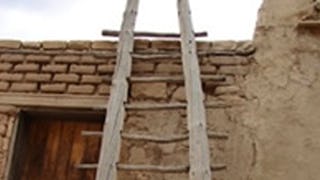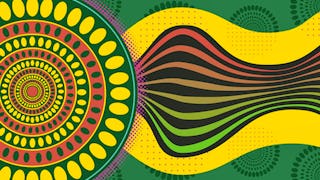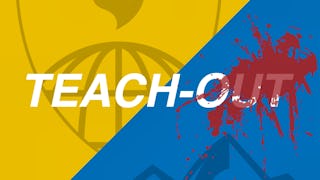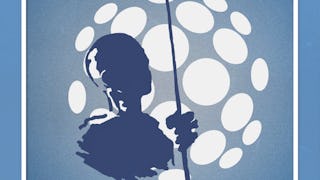Indigenous Canada is a 12-lesson Massive Open Online Course (MOOC) from the Faculty of Native Studies that explores the different histories and contemporary perspectives of Indigenous peoples living in Canada. From an Indigenous perspective, this course explores complex experiences Indigenous peoples face today from a historical and critical perspective highlighting national and local Indigenous-settler relations. Topics for the 12 lessons include the fur trade and other exchange relationships, land claims and environmental impacts, legal systems and rights, political conflicts and alliances, Indigenous political activism, and contemporary Indigenous life, art and its expressions.

Early bird sale! Unlock 10,000+ courses from Google, IBM, and more for 50% off. Save today.


(23,252 reviews)
Skills you'll gain
Details to know

Add to your LinkedIn profile
12 assignments
See how employees at top companies are mastering in-demand skills

There are 12 modules in this course
In this introductory module, students learn the significance of stories and storytelling in Indigenous societies. We explore history that comes from Indigenous worldviews, this includes worldviews from the Inuit, Nehiyawak, Kanien:keha’ka and Tlingit peoples.
What's included
4 videos2 readings1 assignment
This module discusses pre-contact trading systems between Indigenous peoples of North America with a focus on the geographical region of Canada. We examine the chronological events of contact with Europeans and the events leading up to, and during the fur trade. This module also explores the long lasting social, political and economic ramifications of the fur trade on Indigenous peoples.
What's included
4 videos2 readings1 assignment
Examines Indigenous and settler perspectives of treaty making. Discusses the variation of treaties in Canada and the unique circumstances surrounding these events. Outlines the temporal and geographical history of the numbered treaties (beginning on the east) and ends with a discussion of the historical events and policies leading up to Métis scrip.
What's included
3 videos2 readings1 assignment
This lesson begins with a discussion about what is distinctive in Indigenous legal traditions. Explores impacts of policies put in place as British North America attempted to solidify itself geographically and socially. Examines the ways in which the Indian Act contributed to assimilation.
What's included
3 videos2 readings1 assignment
Outlines characteristics of teaching and learning in Indigenous communities, and discusses how relationships were critical in teaching and learning. Traces the development and implementation of the Residential school system in the period after Confederation. Discusses intergenerational impact of Residential school system and the creation of the Truth and Reconciliation Commission.
What's included
4 videos2 readings1 assignment
This lesson examines the burgeoning resistance of Indigenous leaders and the formation of Indigenous-led organizations as the Canadian government employed strategies to encourage assimilation of Aboriginal peoples and communities into mainstream society, specifically relating to urbanization.
What's included
4 videos2 readings1 assignment
In this lesson students will learn about key characteristics of a few different Indigenous political structures and the impacts of colonialism on these structures (e.g. Indian Act, Red Power/AIM, White Paper, Red Paper -Citizens Plus) Concepts explored include self-government, self-determination, and Indigenous resurgence.
What's included
3 videos2 readings1 assignment
Utilizing contemporary and traditional examples, this lesson connects Indigenous worldviews and traditional ecological knowledge. As well, this lesson traces the historical impacts of settlement. Discusses key concepts of case law associated with Aboriginal title, rights to land and resources. List the on-going threats to Indigenous lands and how these threats and challenges are being addressed.
What's included
3 videos2 readings1 assignment
Exploring Indigenous concepts of gender, and the traditional roles and responsibilities, this lesson then moves into an examination of how colonization can be characterized as a gendered project. Identifies some concrete examples of the impact of colonialism on Indigenous women.
What's included
3 videos2 readings1 assignment
Looking critically at the statement: “Cities are the place where Aboriginal culture goes to die”, this lesson explores sites of urban Aboriginal agency/active participation, urban Aboriginal governance practices, and urban reserves.
What's included
3 videos2 readings1 assignment
What is an Indigenous concept of community? How do Indigenous people form communities traditionally and today? This module will explain how social and environmental activism can mobilize and create communities. This module identifies key moments such as the Oka Crisis, Idle No More and Missing and Murdered Indigenous Women and Girls are grassroots resistance movements.
What's included
3 videos2 readings1 assignment
Finally, we will explore how geographical location, trading networks and partnerships have influenced Indigenous art in the past. As well, we will examine contemporary iterations of Indigenous art and explore some of the artistic responses of Indigenous artists, musicians, and writers to the impacts of colonialism.
What's included
4 videos2 readings1 assignment
Earn a career certificate
Add this credential to your LinkedIn profile, resume, or CV. Share it on social media and in your performance review.
Instructor

Offered by
Explore more from History


University of Toronto


University of Alberta
 Status: Free
Status: Free
Johns Hopkins University


Universitat Autònoma de Barcelona
Why people choose Coursera for their career




Learner reviews
23,252 reviews
- 5 stars
84.48%
- 4 stars
13.61%
- 3 stars
1.38%
- 2 stars
0.24%
- 1 star
0.27%
Showing 3 of 23252
Reviewed on Oct 28, 2020
This course helped me to get a better understanding of the Indigenous people which in turn helped to appreciate them, their culture and their contribution to society in a more profound way. Thank you
Reviewed on Aug 8, 2021
I am impressed with the way this course was delivered in multiple ways. It took a while for me to get used to listening to stories but I am a better learner now. Every Canadian needs this teaching.
Reviewed on Oct 13, 2021
This was one of the best online courses I have taken. It was well written, great material related to my own personal development and gave me a better understanding of the Indigenous Peoples in Canada.

Open new doors with Coursera Plus
Unlimited access to 10,000+ world-class courses, hands-on projects, and job-ready certificate programs - all included in your subscription
Advance your career with an online degree
Earn a degree from world-class universities - 100% online
Join over 3,400 global companies that choose Coursera for Business
Upskill your employees to excel in the digital economy
Frequently asked questions
Access to lectures and assignments depends on your type of enrollment. If you take a course in audit mode, you will be able to see most course materials for free. To access graded assignments and to earn a Certificate, you will need to purchase the Certificate experience, during or after your audit. If you don't see the audit option:
The course may not offer an audit option. You can try a Free Trial instead, or apply for Financial Aid.
The course may offer 'Full Course, No Certificate' instead. This option lets you see all course materials, submit required assessments, and get a final grade. This also means that you will not be able to purchase a Certificate experience.
When you purchase a Certificate you get access to all course materials, including graded assignments. Upon completing the course, your electronic Certificate will be added to your Accomplishments page - from there, you can print your Certificate or add it to your LinkedIn profile. If you only want to read and view the course content, you can audit the course for free.
You will be eligible for a full refund until two weeks after your payment date, or (for courses that have just launched) until two weeks after the first session of the course begins, whichever is later. You cannot receive a refund once you’ve earned a Course Certificate, even if you complete the course within the two-week refund period. See our full refund policy.
More questions
Financial aid available,


